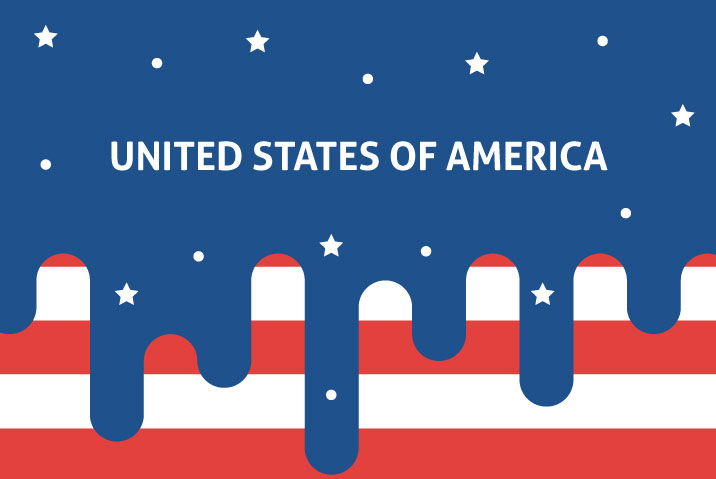

The Wealth Gap in the United States
Income inequality is highly debated worldwide, but one of the countries that is most often analyzed and referred to when it comes to this topic is, of course, the U.S. That’s not only because the United States is one of the most powerful nations in the world, but also because the U.S. has the highest income inequality among western industrialized nations, with 76% of Americans living paycheck to paycheck while the top 1% richest people earn 20% of the total national income.
If this were not bad enough, wealth is even more highly concentrated than income. Wealth refers to a person’s general possessions, not only their income. It may include inheritance, savings, properties etc. These two statistics show just how insane wealth inequality is in the United States: the top 0.1% of American households have the same amount of wealth as the bottom 90% of the population and America’s 4 wealthiest households own as much as the bottom 40% (128 million people!).
What’s probably the most alarming fact is that inequality consistently increases year after year. Studies show that the share of wealth held by the top 3% rose from 44.8% in 1989 to 51.8% in 2007 and 54.4% in 2013, while the share held by the bottom 90% fell from 33.2% in 1989 to 24.7% in 2013.
All these may seem simple figures or numbers, but they are an everyday reality for most Americans. Income and wealth inequality influences their access to education and health care, limits their social mobility, professional success and personal growth. Ultimately, economic inequality leads to depression, status anxiety, mental illness, obesity, higher rates of infant and adult mortality, violence and crime. More so, researchers recently found that the richest 1% live up to 15 years longer than the bottom 1%!
The most unequal U.S. states
As we might expect, in some U.S. states income and wealth inequality is worse than in others. The top 10 states with the largest disparities between the rich and the poor are New York, California, Connecticut, Louisiana, Massachusetts, Illinois, New Jersey, Florida, Georgia, and Texas. In the state of New York, the top 5% richest people have average incomes 20 times as large as the bottom 20%. Income inequality has increased with 148% since 1979 in California and with 291% in Connecticut and Massachusetts! Louisiana also has a disproportionate income ratio, with 5% of households receiving 19% of the state’s total income.
The disappearance of the U.S. middle class
With the rich becoming richer and the poor poorer, the middle class is rapidly disappearing. Today, the U.S. has the smallest middle class, holding just 22% of total net financial assets, half the average of other industrialized countries! Of course, the term “middle class” is very subjective and may include people with annual incomes between $35,000 and $100,000. What’s more important and relevant is the fact that fewer and fewer Americans think of themselves as part of the middle class and they consider themselves part of the lower class instead. According to a recently conducted poll, the percentage of Americans who identified themselves as middle class declined nearly every year since 2000, while the percentage of those who thought of themselves as lower class has increased five times from 3 to 15 percent from 2000 to 2015.
What famous Americans say about inequality
“Experience demands that man is the only animal which devours his own kind, for I can apply no milder term to the general prey of the rich on the poor.” (Thomas Jefferson, politician)
“A nation will not survive morally or economically when so few have so much, while so many have so little.” (Bernie Sanders, politician)
“The test of our progress is not whether we add more to the abundance of those who have much; it is whether we provide enough for those who have too little.” (Franklin D. Roosevelt, politician)
“The causes which destroyed the ancient republics were numerous; but in Rome, one principal cause was the vast inequality of fortunes.” (Noah Webster, editor and writer)
“No person, I think, ever saw a herd of buffalo, of which a few were fat and the great majority lean. No person ever saw a flock of birds, of which two or three were swimming in grease, and the others all skin and bone.” (Henry George, political economist)
“We can either have democracy in this country or we can have great wealth concentrated in the hands of a few, but we can’t have both.” (Louis Brandeis, U.S. Supreme Court Justice)
A solution
Figuring out how to tackle rising inequality is one of the key challenges of our time. There are many political platforms that promise a more equal world and many economists work on proposing different solutions to this crucial problem. With WowApp, you can take the income inequality fight in your own hands. By using WowApp, you earn what’s rightfully yours from activities that you were before doing for free: chatting with friends, playing online games, shopping online, simply unlocking your phone and many more. A part of your daily earnings is automatically donated to a charity of your choice and it’s your decision whether you also donate the rest of your earnings or you cash out the money for yourself. Either way, you do good in the world and help stop the rising trend of income inequality. Find out more about WowApp and Wowism here.
*Sources:
http://wowism.org/
https://www.nytimes.com/interactive/2016/12/16/business/economy/nine-new-findings-about-income-inequality-piketty.html
http://fortune.com/2015/09/30/america-wealth-inequality/
http://money.cnn.com/2013/06/24/pf/emergency-savings/
http://www.businessinsider.com/share-of-us-household-wealth-by-income-level-2016-11
http://metrocosm.com/wealth-vs-income-inequality/
https://www.theguardian.com/us-news/2017/apr/06/us-healthcare-wealth-income-inequality-lifespan
http://www.cbpp.org/blog/a-state-by-state-look-at-income-inequality
https://www.weforum.org/agenda/2016/12/how-much-inequality-is-too-much
http://www.vocativ.com/188773/middle-class-america-disappearing/
